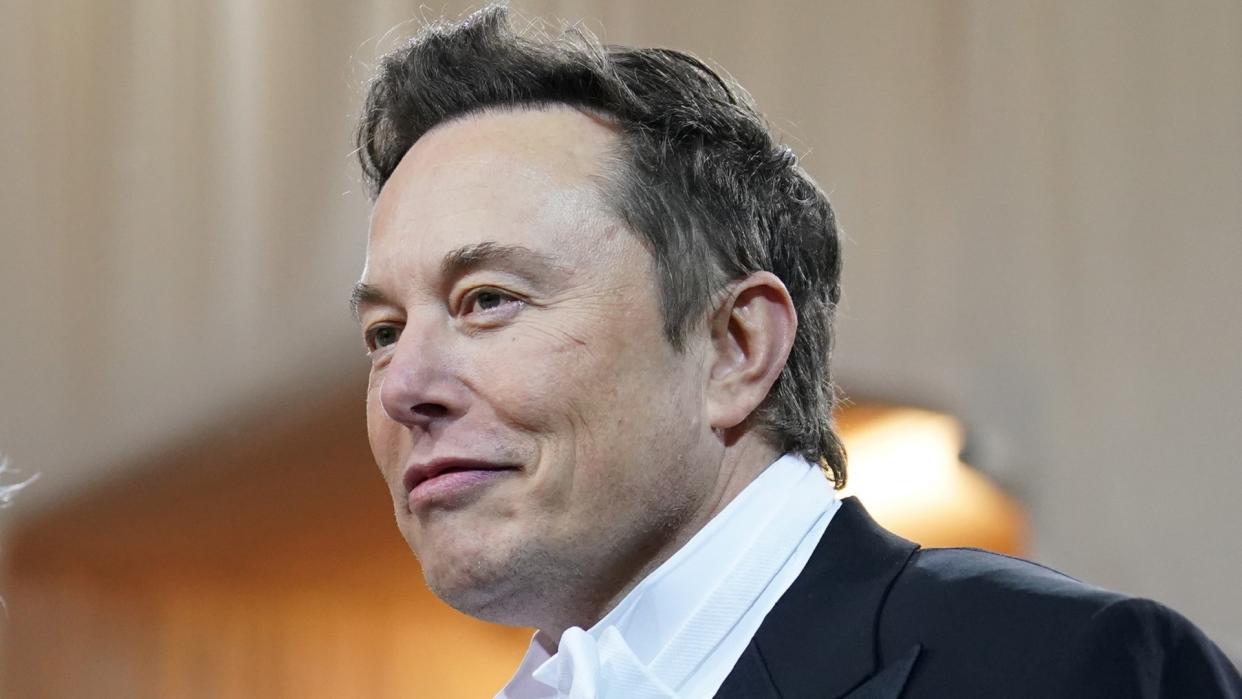SpaceX’s Starlink Partners With T-Mobile to Eliminate Cellular Dead Zones – Is it Available In Your Area?

- Oops!Something went wrong.Please try again later.
- Oops!Something went wrong.Please try again later.
SpaceX founder Elon Musk and T-Mobile CEO Mike Sievert announced a joint plan — Coverage Above and Beyond — to eliminate mobile dead zones, by leveraging SpaceX’s Starlink constellation of satellites in low Earth orbit and T-Mobile’s wireless network.
The Future of Finances: Gen Z & How They Relate to Money
Save More: Back-to-School Tips To Help You Cut Costs
“The important thing about this is that it means there are no dead zones anywhere in the world for your cell phone,” Musk said in a joint statement. “We’re incredibly excited to do this with T-Mobile.”
The companies said in the statement that despite LTE and 5G wireless networks, more than half a million square miles of the U.S. in addition to vast stretches of ocean are untouched by cell signals from any provider. They added that the wireless industry has struggled to cover these areas with traditional terrestrial cellular technology, most often due to land-use restrictions.
Matt Hatton, founding partner at Transforma Insights, told GOBankingRates that “this is a great announcement for anyone struggling with connecting when outside of network coverage.”
“It’s very limited, applying only to 5G smartphone users, and only giving access to a limited set of services, mostly messaging. But in an emergency situation, it could be a lifesaver. And it provides a minimum level of connectivity everywhere, at least in the U.S.,” Hatton added.
Ivan Prock Intermediate Water Resources Engineer Greenland International Consulting, echoed the sentiment, telling GOBankingRates that the new partnership will be instrumental in providing affordable, worldwide cellphone communications “which will allow intrepid explorers to reassure their loved ones that ‘everything is okay.'”
“If events take a turn for the worse, this new system will also be reassuring to loved ones to know that people in distress will be able to summon help wherever they find themselves, be it in the middle of an ocean, on a mountaintop, or even on a trail in a remote section of a national park,” Prock added.
Most of the smartphones already on T-Mobile’s network will be compatible with the new service using the device’s existing radio, and there will be no extra equipment to buy.
“Starlink V2, launching next year, will transmit direct to mobile phones, eliminating dead zones worldwide,” Musk tweeted on Aug. 25.
Starlink V2, launching next year, will transmit direct to mobile phones, eliminating dead zones worldwide
— Elon Musk (@elonmusk) August 26, 2022
Under the plan, customers will be able to text and use certain messaging apps “practically everywhere in the continental U.S., Hawaii, parts of Alaska, Puerto Rico and territorial waters, even outside the signal of T-Mobile’s network starting with a beta in select areas by the end of next year after SpaceX’s planned satellite launches.”
Ammar Mohrat, a software engineer at T-Mobile and TEDx speaker, told GOBanmingRates that “the idea of being connected anywhere and everywhere is astonishing.”
“It is about time that we finally find a solution to reach the unreachable,” Mohrat said. “The alliance between T-Mobile and SpaceX will have a great impact on almost everyone and I can’t wait to see all the technology and inventions that will make life easier and change the world we live in today. To above and beyond!”
T-Mobile and SpaceX also said they wish to expand their “Coverage Above and Beyond” technology globally, adding that they are “committed to offer reciprocal roaming to those providers working with them to enable this vision.”
Tim Ayers, a consultant, compared the “profound announcement” to “the leap the telegraph brought the world 150 years ago.”
“This really is a historic moment in communications. T-Mobile and SpaceX just blew the minds of every mobile operator and communications technology player across the globe. Expect lots of naysayers poo-pooing the whole thing, even though they know otherwise,” Ayers told GOBankingRates.
Starlink has 500,000 users “and counting” in 32 countries, according to a deck from the SpaceX all-hands meeting, Musk tweeted on June 5. In addition, the deck notes that the company has delivered 15,000 Starlink units to Ukraine, and provides internet “by land, air & sea.”
In April, Musk announced that Starlink would provide complimentary high-speed, low-latency broadband internet access to every guest onboard Hawaiian Airlines flights between the islands and the continental U.S, Asia and Oceania, as GOBankingRates previously reported.
To find out if Starlink is available in your area or to set it up for your boat or RV, check out their website here.
In addition, also during the meeting in June, Musk said that Starlink won’t go public until 2025, despite investors’ enthusiasm about a potential initial public offering (IPO), one which was reportedly set to happen this year.
“I’m not sure exactly when that [IPO] is, but maybe it will be like — I don’t know, just guessing — three or four years from now,” Musk said at an all-hands meeting of the private company’s employees on June 2, according to an audio recording obtained by CNBC.
SpaceX raised $250 million in an equity round in July, according to a Securities and Exchange Commission (SEC) filing, bringing the total to $2 billion raised so far in 2022, according to CNBC.
See: SpaceX Can Now Link Airplanes, Boats and More to Starlink Internet
Find: Your Cell Phone Bill Just Got Hit By Inflation — Here’s How Much Verizon and AT&T Are Raising Rates
As for T-Mobile, the stock is up 28.5% year-to-date and was up 0.63% in pre-market trading on Aug. 26.
More From GOBankingRates
This article originally appeared on GOBankingRates.com: SpaceX’s Starlink Partners With T-Mobile to Eliminate Cellular Dead Zones – Is it Available In Your Area?

